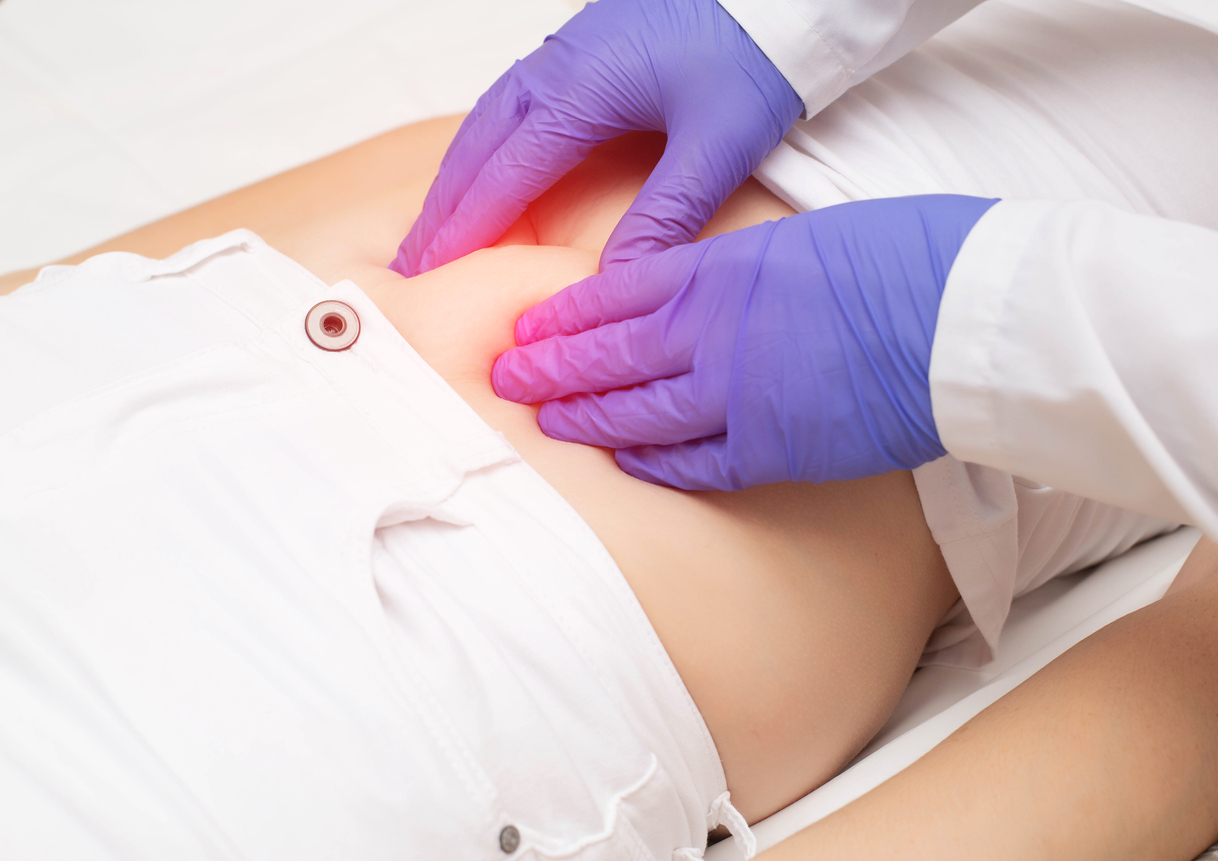Eamonn Brady MPSI looks at inflammatory bowel disease, with a particular focus on Crohn’s disease
Crohn’s disease is one of the two main forms of inflammatory bowel disease (IBD). The second main form of inflammatory bowel disease is ulcerative colitis. Crohn’s disease causes inflammation of the digestive system. In the case of Crohn’s, while it is due to an immune response, it does not appear to be an autoimmune disease, meaning that it is not caused by the immune system being triggered by the body itself.
Crohn’s is a chronic condition, with many experiencing it as an ongoing and life-long disease, often with periods of remission as well as relapses or flare-ups. There is currently no cure for Crohn’s but medication and sometimes surgery can give long periods of relief.
Ulcerative colitis only affects the inner lining of the colon, also known as the large intestine. In Crohn’s disease, inflammation can appear anywhere in the digestive tract, from the mouth to the anus. Crohn’s generally affects all the layers of the bowel walls, not just the inner lining, so tends to have more serious symptoms.
Causes
The exact cause is not known, but researchers and experts think Crohn’s is caused by a combination of factors, including:
- Genetic factors.
- An abnormal reaction of the digestive system to bacteria in the intestine.
- An unknown trigger or perhaps set of triggers that may include viruses, other bacteria, diet, stress, or other environmental factors.
How does Crohn’s disease affect the intestinal tract?
Any part of the intestinal tract can be affected in Crohn’s disease. The most common area is the last part of the small intestine (terminal ileum) and the first part of the large intestine (colon), near the appendix. For some, only the colon is affected, in a pattern like ulcerative colitis. In others, multiple parts of the intestinal tract are affected. Rarely, the mouth, throat, oesophagus, or stomach may be affected. A patch of inflammation may be as small as a few centimetres or extend most of the distance along the intestinal tract. As well as affecting the lining of the bowel, Crohn’s may also go deeper into the bowel wall.
Symptoms
Crohn’s disease is a very individual condition, ranging from very few symptoms, to others with frequent flare-ups or constant disease. The part of the intestinal tract most affected by Crohn’s influences the symptoms.
In general, the most common symptoms during a flare-up are:
- Abdominal pain and diarrhoea. Sometimes mucus, pus or blood are mixed with the diarrhoea.
- Tiredness and fatigue. This can be due to the illness itself, from the weight loss associated with flare-ups or surgery, anaemia from blood loss, or simply due to a lack of sleep due to pain, diarrhoea and other symptoms which inevitably affect sleep.
- Feeling generally unwell. Some people may have a raised temperature and feel feverish.
- Mouth ulcers.
- Loss of appetite and weight loss.
- Anaemia.
Main types of Crohn’s disease
Crohn’s is often categorised according to which part or parts of the intestinal tract are most affected. The main types are:
Terminal ileal and ileocecal
Crohn’s in the ileum (the last part of the small intestine) is known as ileal or sometimes ‘terminal ileal’ Crohn’s because it affects the terminus or end of the ileum. If it affects the beginning of the large bowel, it is known as ileocecal Crohn’s. In this type of Crohn’s, pain is often experienced in the lower right side of the abdomen, especially after eating. There is often weight loss, and diarrhoea may occur. Because Crohn’s in the ileum can make it difficult for the body to absorb bile salts, bile salts can build up, leading to irritation the bowel lining; diarrhoea often occurs and is most likely to be watery. The diarrhoea is unlikely to be bloody, as any blood lost will be digested by the time it reaches the rectum. About four-in-10 people with Crohn’s have ileal or ileocecal disease.
Small bowel
Abdominal pain and diarrhoea are also common symptoms if Crohn’s occurs further up the small bowel. Again, the diarrhoea is unlikely to be blood-stained, but weight loss and anaemia may be experienced. Nearly a third of people with Crohn’s have it in the small bowel.
Colonic
Crohn’s disease in the colon (large intestine or large bowel) is known as ‘Crohn’s colitis’. This is a common form of Crohn’s disease. The main symptom tends to be blood-stained diarrhoea. Because of the inflammation, the colon cannot hold as much waste as normal, so very frequent bowel movements occur (six or more a day), especially if the rectum is inflamed.
Gastroduodenal
Crohn’s in the upper intestinal tract (the oesophagus, stomach, or duodenum) is much less common. Symptoms that indicate Crohn’s in the upper intestinal tract include indigestion-like pain, nausea, loss of appetite, and weight loss.
Perianal
Crohn’s in the area around the anus can occur on its own or at the same time as inflammation in other parts of the body. It can cause symptoms such as fissures, skin tags, haemorrhoids, abscesses and fistulas.
Oral Crohn’s
Crohn’s can occasionally affect the mouth. True oral Crohn’s, which typically causes swollen lips and mouth fissures, is rare. However, about one-in-five people with Crohn’s tend to develop mouth ulcers.
Complications
Complications of Crohn’s can also be troublesome. Complications may occur in the intestinal tract or other areas of the body. Complications in the intestinal tract may include strictures, perforations, and fistulas.
Complications of Crohn’s in the intestinal tract
Strictures
Ongoing inflammation and then healing in the bowel may cause scar tissue to form. This can create a narrow section of the bowel, known as a stricture. A stricture can make it difficult for food to pass, leading to a blockage. Symptoms include severe cramping, abdominal pain, nausea, vomiting and constipation. The abdomen may become bloated and distended and the intestinal tract may make loud noises. Strictures are usually treated surgically, mainly with an operation known as a stricturoplasty.
Perforations
Very occasionally, a severe blockage caused by a stricture may lead to a perforation or rupture of the bowel, making a hole. The contents of the bowel can leak through the hole and form an abscess. This causes pain and a fever. An abscess may also develop into a fistula.
Fistulas (fistulae)
A fistula can form when inflammation in Crohn’s spreads through the whole thickness of the bowel wall and continues to tunnel through the layers of other tissues. These tunnels or passageways can connect the bowel to other loops of bowel, to the surrounding organs, such as the bladder and vagina, or to the outside skin, including the skin around the anus. Fistulas may be treated medically or with surgery.
Complications of Crohn’s disease affecting other parts of the body
Crohn’s disease can also cause problems outside the intestinal tract. Some people with Crohn’s develop conditions affecting the joints, eyes, or skin. These often occur during active disease, but they can develop before any signs of bowel disease or during times of remission.
Joints
Inflammation of the joints affects up to one-in-three people with IBD. In people with Crohn’s, arthritis is more commonly associated with Crohn’s colitis (Crohn’s disease in the colon). The inflammation usually affects the large joints of the arms and legs, including the elbows, wrists, knees, and ankles. Fluid collects in the joint space, causing painful swelling, although there can be pain without obvious swelling. Symptoms generally improve with treatment for intestinal symptoms and there is mainly no lasting joint damage.
Skin
Crohn’s can cause skin problems. The most common skin problem is erythema nodosum, which affects about one-in-seven people with Crohn’s. Painful red swellings appear, usually on the legs, and then fade, leaving a bruise-like mark. This condition tends to occur during flare-ups and generally improves with treatment for the Crohn’s.
Eyes
Eye problems affect approximately one-in-20 people with Crohn’s. The most common condition is episcleritis, which affects the layer of tissue covering the sclera (the white outer coating of the eye), making it red, sore, and inflamed. Two other eye conditions associated with Crohn’s are scleritis (inflammation of the sclera itself) and uveitis (inflammation of the iris).
Bones
Crohn’s increases risk of bone-thinning; this is mainly due to poor absorption of calcium needed for bone formation. Sometimes, low calcium levels are because the diet does not contain enough dairy foods or the use of steroid medication. Calcium supplementation and for some, drug treatment with the likes of alendronates, is needed.
Liver
About one-in-four people with Crohn’s develop gallstones. These are small ‘stones’ made of cholesterol, which can get trapped in the gallbladder (just under the liver) and can be very painful. Several factors linked with Crohn’s can make gallstones more likely, including poor absorption of bile salts often caused by inflammation. Bile salts help to digest fats during digestion. Some of the drugs used to treat Crohn’s, such as azathioprine and methotrexate, may increase liver problems.
Blood circulation
Crohn’s disease doubles the risk of blood clots in the veins, including DVT (deep-vein thrombosis) in the legs. Risk is highest during a flare-up or if confined to bed, ie, during a hospital visit. Warning symptoms patients need to be aware of include pain, swelling and tenderness in the leg, or chest pains and shortness of breath.
Anaemia
There are several different types of anaemia. People with inflammatory bowel disease are most likely to develop iron deficiency anaemia. This is caused by a lack of iron in the diet or poor absorption of iron from food and can be made worse by ongoing intestinal blood loss due to inflammation. Another type of anaemia is vitamin deficiency anaemia, caused by a low intake or poor absorption of certain vitamins, such as vitamin B12 or folic acid. This particularly affects people with Crohn’s who have had sections of the small intestine removed. Some of the drugs used for Crohn’s, such as sulfasalazine and azathioprine, can also cause anaemia. Symptoms of anaemia include tiredness and fatigue and if not treated, can lead to shortness of breath, headaches, and general weakness. Depending on the cause of anaemia, iron, B12 or folic acid supplements are the most common treatments.
Crohn’s disease and the link to cancer
Severe or extensive Crohn’s disease affecting all or most of the colon for many years can mean a slightly increased risk than normal of developing colon cancer.
Diagnosis
Diarrhoea, abdominal pain, and weight loss lasting for several weeks or longer indicate that Crohn’s is a possibility, particularly if there is a family history of inflammatory bowel disease. Tests and physical examinations can confirm a diagnosis. These include:
Blood tests and stool tests
Simple blood tests can show inflammation and anaemia, both of which are indicators of Crohn’s. Stools can also be tested for signs of bleeding or inflammation, and to check whether diarrhoea is caused by an infection.
Endoscopy
There are several types of endoscopy which have different names based on the type of scope used and part of the intestinal tract being examined. For example:
- An upper GI endoscopy: A thin, flexible tube with a camera in its tip is inserted through the mouth to examine the oesophagus, stomach, and duodenum.
- A sigmoidoscopy or colonoscopy: For symptoms in the ileum or colon, a sigmoidoscope (a short endoscope) or a colonoscope (a longer and more flexible endoscope) will be inserted through the anus to examine the rectum and colon.
Endoscopies should not be painful but may be uncomfortable, so the patient may be given a sedative to help them relax. Biopsies (small samples of tissue) are often taken during the endoscopy. These can then be examined under a microscope to confirm the diagnosis.
Barium x-ray tests
Barium sulphate is a harmless, white, chalky substance that coats the lining of the intestinal tract and so gives a clearer outline in an x-ray.
MRI and CT scans
MRI (magnetic resonance imaging) and CT (computerised tomography) scans can determine the extent of the inflammation. MRI scans use magnets and radio waves, and CT scans use a special kind of x-ray to build up a 3D image of the body. Ultrasound is sometimes also used to aid diagnosis.
Treatment
Treatment for Crohn’s may be medical, surgical or a combination of both. For mild Crohn’s, no drug treatment may be needed. Dietary therapy may be another option for some. Treatment will depend on the type of Crohn’s.
Medication used treat Crohn’s disease
Drug treatment for Crohn’s aims to reduce symptoms and control flare-ups, and then to prevent a relapse once the disease is under control. This can mean taking medication on an ongoing basis, sometimes for many years.
Anti-inflammatory drugs
These help to reduce inflammation and
include:
- 5 ASAs or aminosalicylates, such as mesalazine (brand names include Asacol, Pentasa and Salofalk) and sulfasalazine (Salazopyrin).
- Corticosteroids, often just called steroids, such as prednisolone, hydrocortisone, and budesonide (Entocort).
- Immunosuppressants such as azathioprine (Imuran), methotrexate and tacrolimus.
- Biological or ‘anti-TNF’ drugs, such as infliximab (Remicade) and adalimumab (Humira). Biological therapies are generally reserved for people in poor general health with severe symptoms of Crohn’s disease, especially if corticosteroids and immunosuppressants are unsuitable or ineffective. Biological treatment usually lasts at least 12 months, unless these drugs stop being effective sooner or the patient cannot tolerate them. After this time, the condition will be assessed to determine if further treatment is necessary.
Symptomatic drugs
These help control and reduce common symptoms such as pain, diarrhoea, and constipation. They include:
- Anti-diarrhoeal, such as loperamide (Imodium) and cholestyramine (Questran).
- Bulking agents, such as ispaghula husk.
- Painkillers, such as paracetamol and aspirin.
Surgical treatment for Crohn’s
Over the last 20 years, advances such as the development of biological drugs have produced better results for Crohn’s disease, meaning surgery is less often needed. There have also been changes in the way surgery for Crohn’s is now managed. For example, extensive resections (removal of diseased sections of the intestine) are now less common.
However, surgery remains an important treatment option, often in combination with medical therapies. It is estimated that about seven out of 10 people with Crohn’s will still need surgery at some point in their lives. Surgery may sometimes be the only option when other treatments cannot sufficiently control the symptoms. Occasionally, an urgent operation is required, for example a severe blockage in the intestines or a hole or tear in the bowel.
Dietary treatment
Enteral nutrition (also known as dietary treatment or nutritional therapy) involves a liquid diet replacement, usually for a few weeks. These feeds contain all the essential nutrients in a simple form that the body can absorb with little or no digestion.
They come in a range of flavours. An alternative may be to take the feed overnight through a nasogastric tube (a fine tube passed through the nose down into the stomach).
Enteral nutrition is widely used for children with Crohn’s disease, because it helps their growth and avoids the use of steroids. There is less evidence for the effectiveness of enteral nutrition in adults, particularly for active Crohn’s disease. Research has shown it to be less effective than steroids. However, enteral nutrition may be recommended for adults who prefer not to use drug therapy, and it can be useful as a supplement for people who need extra nutrition.







